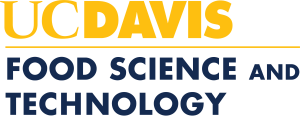A. Specific Learning Outcomes. Students will be able to:
- Apply core knowledge in chemistry, physics, mathematics to the understanding of food systems including problem-solving
- Be familiar with the chemical composition of foods and how this influences functionality and properties
- Discriminate between weak and strong acids and bases
- Explain and evaluate the relationship between titratable acidity and the acids present in foods
- Explain the relationship between titratable acidity and Brix and its relationship to sensory
- Prepare titration curves, standardize NaOH solutions, and titrate unknown weak acids
- Describe the formation of free fatty acids in olive oil, its relationship to olive oil to quality, and how to improve low quality oil
- Recall the major fatty acids in olive oil
- Determine free fatty acid content in olive oil
- Discriminate between a forward and back titration
- Describe a reducing sugar
- Assess the content of lactose in milk
- Relate the determined concentration of lactose to the reported lactose concentration and explain the discrepancy
- Explain how protein functions in food
- Name the major classes of enzymes used in the food industry and describe how they are used
- Summarize the properties of amino acids and explain how they relate to protein structure
- Name the types of protein structure and describe how structure is important to function
- Assess protein concentration through use of the Bradford Assay
- Predict protein solubility as a function of pH, and relate to the Isoelectric point
- Evaluate the effect of heat on protein solubility and denaturation, and its effect on enzymatic activity
- Generate curves to determine blanching efficiency and interpret efficiency using the integrated rate law
- Explain the importance of polysaccharides in food, and how their structures give rise to various properties
- Discriminate between high methoxyl pectins and low methoxyl pectins
- Identify fluid properties
- Explain a sorption isotherm
- Evaluate the effect of environment on water activity
- Explain the relationship between water activity and microbial growth
- Perform experiments, assemble data, and write laboratory reports (in manuscript format) on each of the above learning objectives
How this course addresses IFT core competencies:
Senior-level course:
As an upper division course in the curriculum, FST101A prepares students for the additional courses in their senior year. FST 101A aims to introduce Food Science and Clinical Nutrition students to various topics in Food science through hands-on laboratory experiments, and comprehensive writing of laboratory reports in a weekly basis. FST101A covers food chemistry, through a combination of lectures and labs.
B. Tools used to assess program outcomes.
Bloom’s levels: I-VI Exams, lab reports are appropriate means to assess learning outcomes. As the first lab course, students are taught how to organize and write a lab report. We use these lab reports in our programmatic assessment of writing skills
C. Brief summary of assessment results to date
Principles of Food Composition (FST101A) has been taught by Carolyn Slupsky for 4 years, and has been developed to familiarize the students with basic Food Chemistry concepts. Basic laboratory skills are stressed.
Course assessment takes several approaches. Each year students are requested to complete a course evaluation. Since Dr. Slupsky has taken over the course, students have requested additional lecture time during the week, as well as additional units since the work requirement for the course is substantial (one laboratory report written each week in the form of a manuscript that contains an introduction, methods, results (including graphs and calculations), and discussion on results obtained and their relevance to the food industry). Based on this feedback, Dr. Slupsky has requested that an additional discussion section be scheduled for Fridays such that there is a lecture at the beginning of the week to describe the concepts that the students will be exposed to in the lab, and a discussion at the end of the week to summarize results students obtained during the week and help students further understand the relevance of the laboratory exercise.
